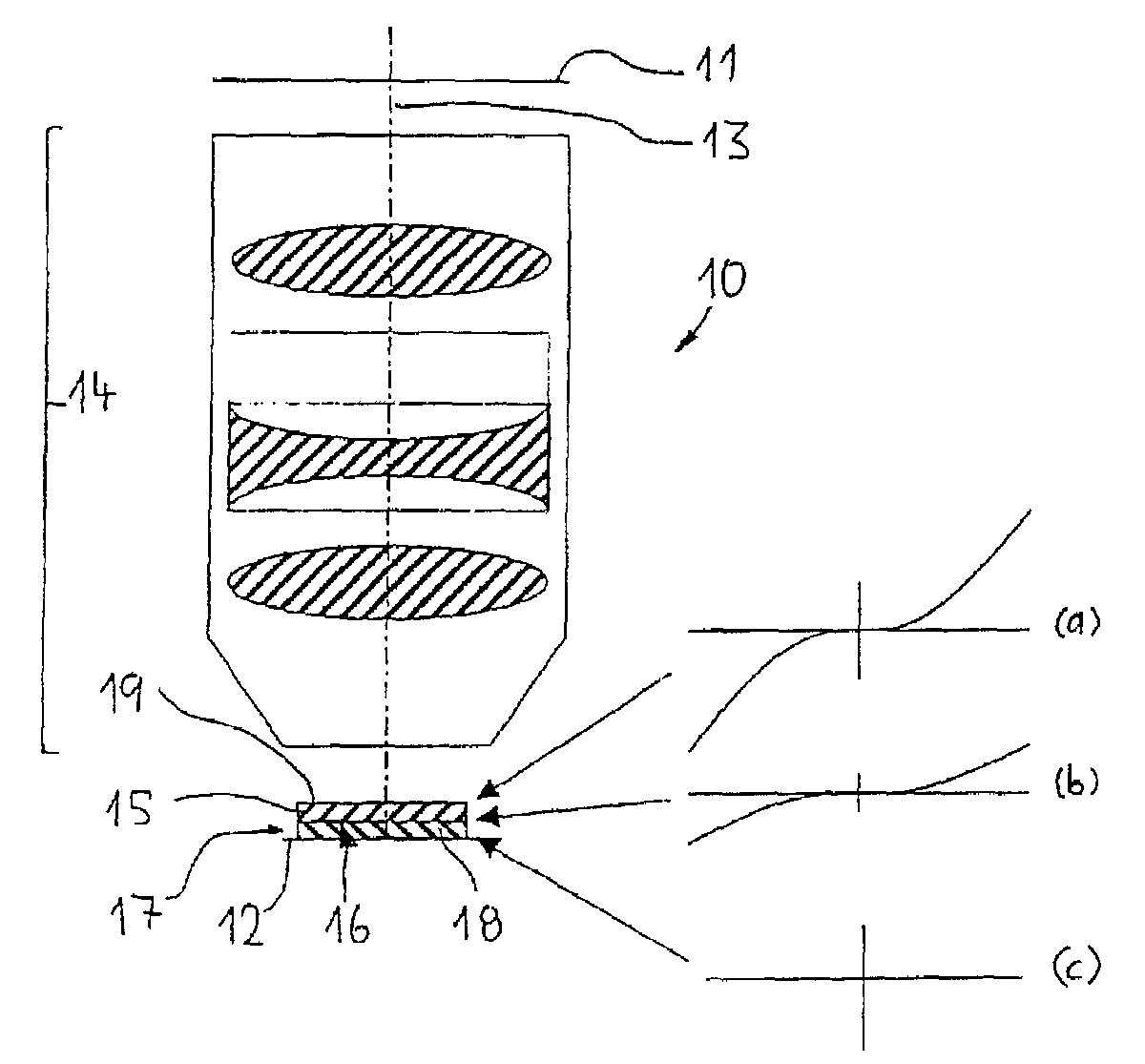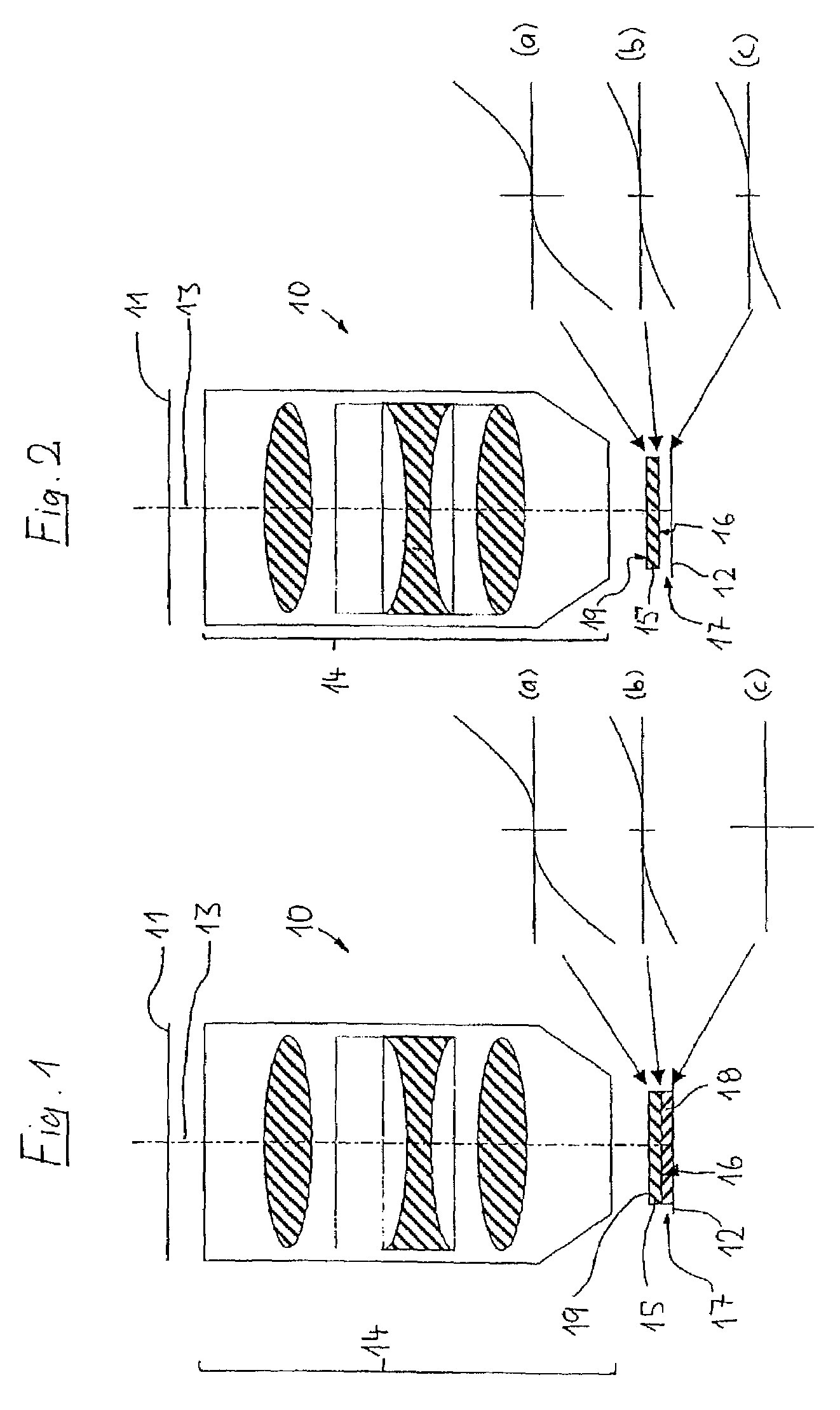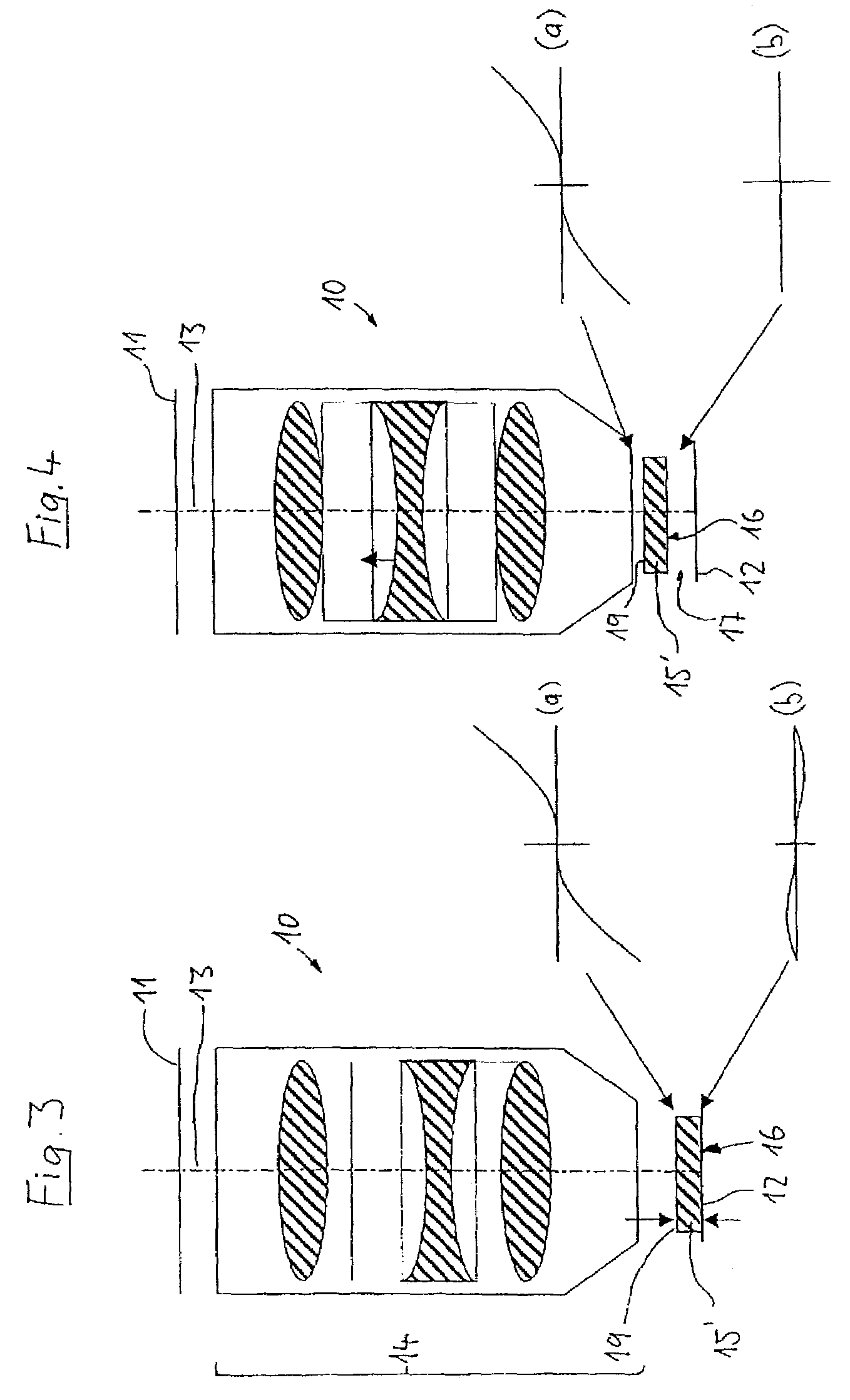Projection objective, especially for microlithography, and method for adjusting a projection objective
- Summary
- Abstract
- Description
- Claims
- Application Information
AI Technical Summary
Benefits of technology
Problems solved by technology
Method used
Image
Examples
Embodiment Construction
[0062]FIG. 1 shows in schematic form a refractive projection objective 10 for the microlithographic production of semiconductor components and other finely structured components. The reduction objective, operating from the deep UV range (DUV), is used to project patterns of photomasks (reticles) which are arranged in the object plane 11 of the projection objective on a reduced scale onto a semiconductor wafer which is coated with photoresist and is to be arranged in the image plane 12 of the projection objective. The projection objective has a large number of optical elements in the form of lenses of synthetic quartz glass, which are arranged along the optical axis 13 of the system. The optical elements comprise a first group 14 immediately following the object plane, and a last optical element 15, which follows the first group 14 and lies closest to the image plane 12. The last optical element will also be referred to below as the terminating element 15; it can consist of one or mo...
PUM
 Login to View More
Login to View More Abstract
Description
Claims
Application Information
 Login to View More
Login to View More - R&D
- Intellectual Property
- Life Sciences
- Materials
- Tech Scout
- Unparalleled Data Quality
- Higher Quality Content
- 60% Fewer Hallucinations
Browse by: Latest US Patents, China's latest patents, Technical Efficacy Thesaurus, Application Domain, Technology Topic, Popular Technical Reports.
© 2025 PatSnap. All rights reserved.Legal|Privacy policy|Modern Slavery Act Transparency Statement|Sitemap|About US| Contact US: help@patsnap.com



